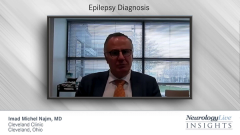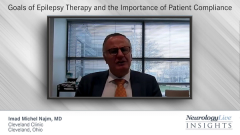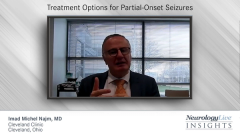
Impact of COVID-19 on Epilepsy Treatment
A discussion about the impact of coronavirus 2019 (COVID-19) on patient compliance with epilepsy therapy.
Imad Michel Najm, MD: COVID-19 has interfered with almost every aspect of life, including taking medications as prescribed. The effect has been different depending on patients’ lifestyles and where they are in their lives. For example, in the cases of patients who are older, patients who are considered to be at a higher risk for complications from COVID-19, some have shown a higher incidence of missing doses of their medication. This is because, according to them, they ran out of the medication and nobody could deliver this medication to them. They were used to walking to the pharmacy or getting somebody to drive them to the pharmacy to pick up the medications.
With COVID-19, these patients are much more careful about going out. In some situations, they do not want to be with other people—including the people who would take them. They can take a cab, an Uber, a Lyft, or whatever, but they still would miss these medications because they ran out of the medications. Of course, COVID-19 interfered with epilepsy in general. For some patients who had COVID-19, their seizures did increase. Taking medications that may be interfering with the antiseizure medication would also predispose them to have breakthrough seizures; therefore, they would need more acute help.
If we want to think about the impact of telemedicine in the time of COVID-19—it has been a major lifesaver for many of our patients. I will give you an example. During the early months of the pandemic in March and April of 2020, more than 98% of our patients at The [The Charles Shor] Epilepsy Center at Cleveland Clinic were seen and managed through telemedicine—98%.
Telemedicine made it easy for us to switch and transition many of our patients from in-person office visits to virtual visits almost overnight. It enabled us to ensure a continuity of care, a continuity of addressing the issues that some of our patients were dealing with. Part of the stress that came from COVID-19 was the fear that it instilled in the minds of many, particularly those with preexisting conditions, including epilepsy. Telemedicine enabled us to avoid any interruption to this continuity of care, to send patients prescriptions whenever they needed, to address some of these questions they would have, to determine whether a higher level of care was needed, and to get the patient to where they are supposed to be.
Now that we are in the later stages of the pandemic, where many of us feel more comfortable being in public, especially after being fully vaccinated, has this change affected our patients’ compliance or adherence to medication and overall epilepsy care? I do not think it did. Actually, it made some patients who would prefer in-patient visits more comfortable coming to the clinic. Some patients may have avoided being seen because they did not even have the means, in some situations, to connect with us through the virtual environment. Some patients really valued the direct interaction with their physician much more, so they may have postponed their care. In some situations, this may have resulted—I don’t have proof of this—in them not taking the medication as prescribed, or running out of medication in some of these situations.
Now that we have this hybrid practice in our environment, it is about getting patients to do whatever they are comfortable with. Some patients tell me, “I’m so happy that I’m able to see you in person.” Others say, “You know what, I don’t know. Unless you tell me I need to come back to see you in person, I would feel more comfortable continuing my treatment this way forever.” This has given our patients more choices and more options for us to connect with our patients to make sure we are giving them the care they all need.
Transcript Edited for Clarity
Newsletter
Keep your finger on the pulse of neurology—subscribe to NeurologyLive for expert interviews, new data, and breakthrough treatment updates.



























